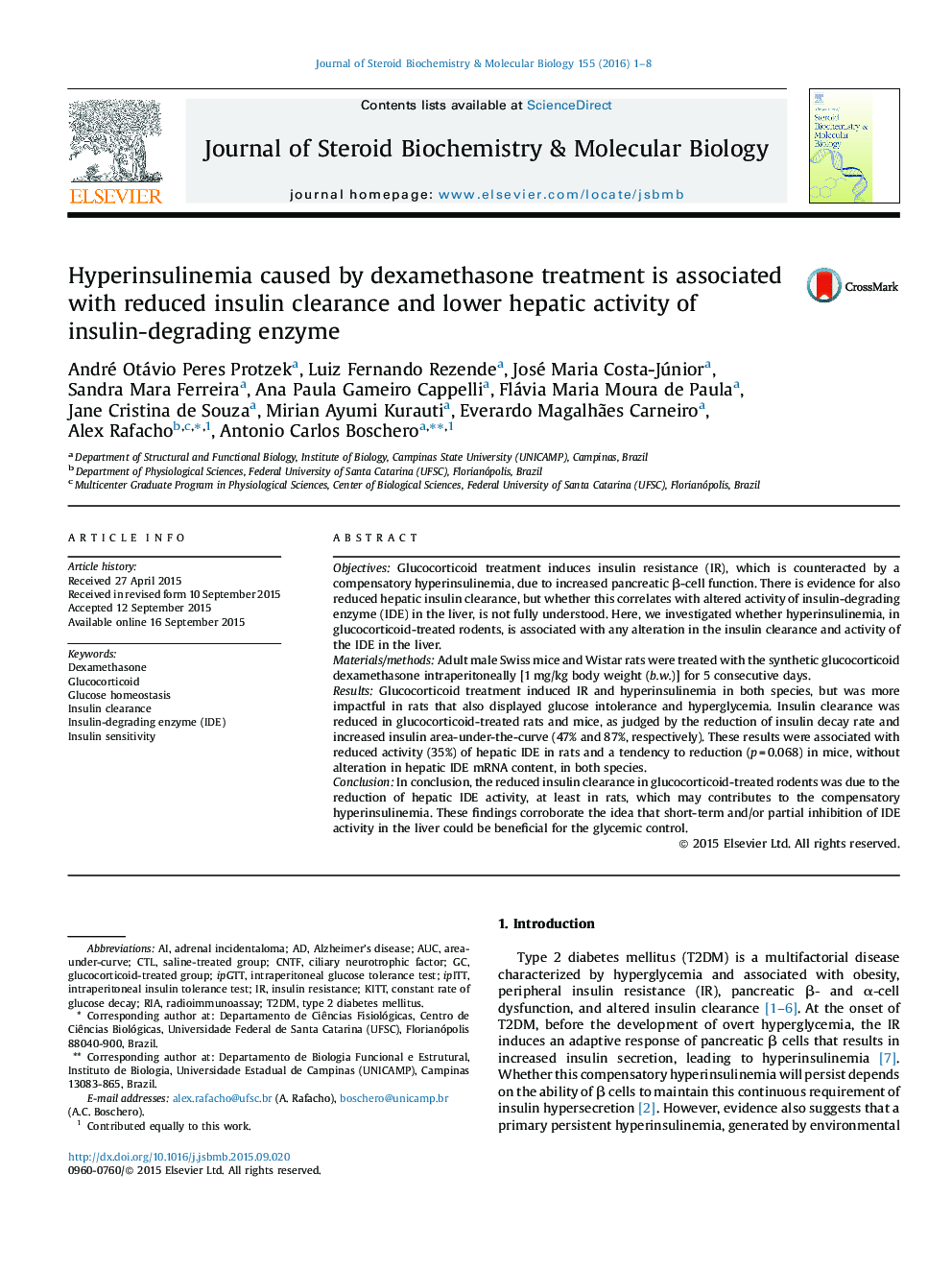| کد مقاله | کد نشریه | سال انتشار | مقاله انگلیسی | نسخه تمام متن |
|---|---|---|---|---|
| 1991356 | 1540994 | 2016 | 8 صفحه PDF | دانلود رایگان |

• Dexamethasone (DEX) in excess causes insulin insensitivity and hyperinsulinemia in rodents.
• DEX-induced hyperinsulinemia is associated to reduced insulin clearance in rats and mice.
• Reduced insulin clearance is associated to decreased activity of hepatic IDE, mainly in rats.
• Reduction in hepatic IDE activity results from post-translational modulation, at least in rats.
• Downregulation of insulin clearance may be beneficial for the glycemic control.
ObjectivesGlucocorticoid treatment induces insulin resistance (IR), which is counteracted by a compensatory hyperinsulinemia, due to increased pancreatic β-cell function. There is evidence for also reduced hepatic insulin clearance, but whether this correlates with altered activity of insulin-degrading enzyme (IDE) in the liver, is not fully understood. Here, we investigated whether hyperinsulinemia, in glucocorticoid-treated rodents, is associated with any alteration in the insulin clearance and activity of the IDE in the liver.Materials/methodsAdult male Swiss mice and Wistar rats were treated with the synthetic glucocorticoid dexamethasone intraperitoneally [1 mg/kg body weight (b.w.)] for 5 consecutive days.ResultsGlucocorticoid treatment induced IR and hyperinsulinemia in both species, but was more impactful in rats that also displayed glucose intolerance and hyperglycemia. Insulin clearance was reduced in glucocorticoid-treated rats and mice, as judged by the reduction of insulin decay rate and increased insulin area-under-the-curve (47% and 87%, respectively). These results were associated with reduced activity (35%) of hepatic IDE in rats and a tendency to reduction (p = 0.068) in mice, without alteration in hepatic IDE mRNA content, in both species.ConclusionIn conclusion, the reduced insulin clearance in glucocorticoid-treated rodents was due to the reduction of hepatic IDE activity, at least in rats, which may contributes to the compensatory hyperinsulinemia. These findings corroborate the idea that short-term and/or partial inhibition of IDE activity in the liver could be beneficial for the glycemic control.
Journal: The Journal of Steroid Biochemistry and Molecular Biology - Volume 155, Part A, January 2016, Pages 1–8